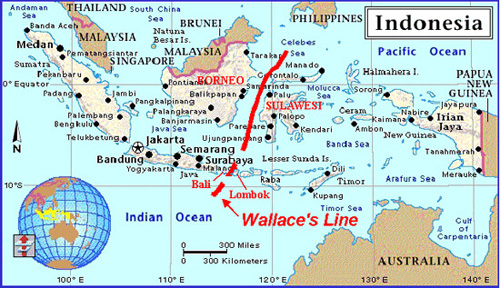TCD Botanists Discover Plants Do Not Follow the Wallace Line
Posted on: 05 August 2011
Botanists at Trinity College’s School of Natural Sciences in conjunction with researchers at Leiden University and the Chinese Academy of Sciences have discovered that plant species in South East Asia, also known as Malesia, do not follow the Wallace Line. The Wallace Line, named after famous biologist Alfred Russel Wallace, defines a boundary which divides Malesia in two and which indicates the limits of distribution for animals living to its east and west. Unlike the fauna of the region, the study showed that plant distributions do not follow Wallace’s line and revealed a stronger partitioning of Malesia into three instead of two regions.
Commenting on the paper, Professor of Systematic Botany at the School of Natural Sciences, Dr John Parnell said: “These three new phytogeographic areas also reflect the present climatic division of Malesia – an ever-wet climate exists on the Sunda and Sahul Shelves, while most of Wallacea has a yearly dry monsoon. The pattern also reflects historic climatic changes as during glacial maxima the Sunda and Sahul Shelves became land areas connected with Asia and Australia respectively, while sea barriers remained within Wallacea. Consequently, the flora of the two shelves is more homogeneous than the Wallacean flora. The analysis indicates that for plants Wallacea is a distinct area comprising many endemic, drought tolerant floristic elements there have significant implications for conservation and all future biogeographic analysis.”

The research, which was recently published online in Biological Journal of the Linnean Society, looked into the distribution of 7,340 plant species divided over 165 families and 896 genera. The study represents 25% of the estimated 30,000 species of ferns and angiosperms in Malesia and includes all plant species which have so far been published for the flora of that region. The plant distributions are divided into the western Sunda Shelf minus Java (Malay Peninsula, Sumatra and Borneo), central Wallacea (Philippines, Sulawesi, Lesser Sunda Islands, Moluccas, with Java), and the easter Sahul Shelf (New Guinea). In comparison the fauna of the area is divided into two regions by the Wallace Line, east and west. Animals in the east of Malesia are non-placental marsupials such as the kangaroo, whilst these are replaced in the west by placental mammals such as bears.
The full paper is accessible via the following link: http://onlinelibrary.wiley.com/doi/10.1111/j.1095-8312.2011.01647.x/abstract.
